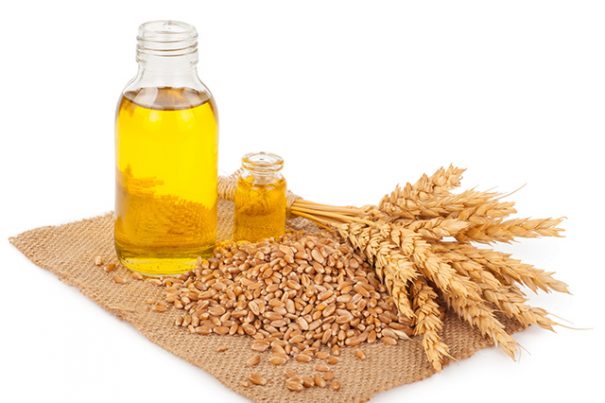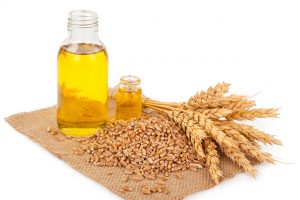
Wheat Germ – sources, health benefits, nutrients, uses and constituents at NaturalPedia.com
Saturday, July 22, 2017 by Jhoanna Robinson
http://www.naturalpedia.com/wheat-germ-sources-health-benefits-nutrients-uses-and-constituents-at-naturalpedia-com-2.html

Wheat germ contributes greatly to the nutritional component of the whole wheat grain. The practice of removing it from processed wheat products actually takes away valuable nutrients from the product as a whole. However, removing it, along with the husk, is necessary so that wheat products can be stored for a longer period of time.
Wheat germ should always be kept refrigerated to avoid early spoilage.

List of known nutrients
- Calcium
- Carbohydrate
- Folate
- Iron
- Magnesium
- Niacin
- Octacosanol
- Omega-3 Fatty Acids
- Potassium
- Phosphorus
- Protein
- Selenium
- Thiamin
- Vitamin B
- Vitamin B6
- Vitamin E
- Zinc
Medicinal uses for wheat germ
The vitamin E in wheat germ makes it abundant with antioxidant properties. Wheat germs are good for fighting free radicals in the body and preventing the onset of disease and infection. Vitamin E also rejuvenates saggy and drooping skin and nourishes the scalp for improved hair growth.
Wheat germ is good for a healthy heart and weight. According to the United States Centers for Disease Control and Prevention (CDC), a person’s recommended daily intake of carbohydrates should come from whole grains to avoid heart ailments and maintain a healthy weight. For its part, the European Food Safety Authority (EFSA) attested to the ability of wheat germ oil to regulate cholesterol levels.
Wheat germ is good for the heart as the omega-3 fatty acids and octacosanol that are present in it improve the volume of good cholesterol while lowering bad cholesterol levels, activities that are good for the cardiac system. Octacosanol – along with calcium and protein – is also proven to increase body endurance and stamina by clearing the biochemiocal pathways that produce energy, and which paves the way for streamlining energy reserve-saving measures in the body. In fact, wheat germs are regularly eaten by athletes to prepare for their games.
Wheat germ is good for maintaining a healthy weight as two tablespoons of wheat germ contains 1.9 grams of fiber, which aids in weight control. It also improves the regularity and quality of bowel movements and prevents constipation. The thiamin in wheat germ is good for preventing chronic obesity.
Wheat germ has anti-aging properties – therefore mental agility, muscle buildup and development, energy and immunity, and the healing rate for wounds are not impacted negatively and are not impaired even when a person reaches his early golden years.
The high folic acid content of wheat germ is good for people whoa re at risk of incurring diabetes as it reduces the levels of homocysteine in the body. Too much homocysteine in the body is believed to cause diabetes, heart diseasse, and vascular disease.
Wheat germ also has cancer-fighting properties. It stops the activities of the protein kinases – which stimulate the proliferation of cancer cells – at a fundamental level.
Body systems supported by wheat germ
Wheat germ is good for the immune system. The protein hydrolysates work against cell and tissue damage and boosts the body’s defective mechanism against diseases.
Ways to use wheat germ
Wheat germ can be used to top ice cream, fruit pies, hot or cold cereal, or yogurt and can also replace breadcrumbs in meatballs and meatloaf. It can be used as a cooking or baking oil, and as a pasta sauce.
Wheat germ is also used as a food additive or as a nutritional supplement. Also try incorporating wheat germ in baked goods and casseroles.
For a quick glimpse on how you can make your meals even more refreshing with wheat germ, try these recipes on for size.
Where to learn more
- Fermented Wheat Germ for Natural Cancer Treatments
- Fermented Wheat Germ Extract Beneficial in Cancer Therapy
- The Benefits of Adding Wheat Germ to Your Diet
- Recipe for Fighting Cancer and for Weight Loss
- 12 Non-Toxic Natural Oils That Act As A Sunscreen Layer
- 14 Non-Toxic Natural oils that act as a partial sunscreen
Summary
Wheat germ has cancer-fighting properties.
Wheat germ is good for the immune system.
Wheat germ has antioxidant properties.
Sources include:
Tagged Under: Tags: wheat germ





